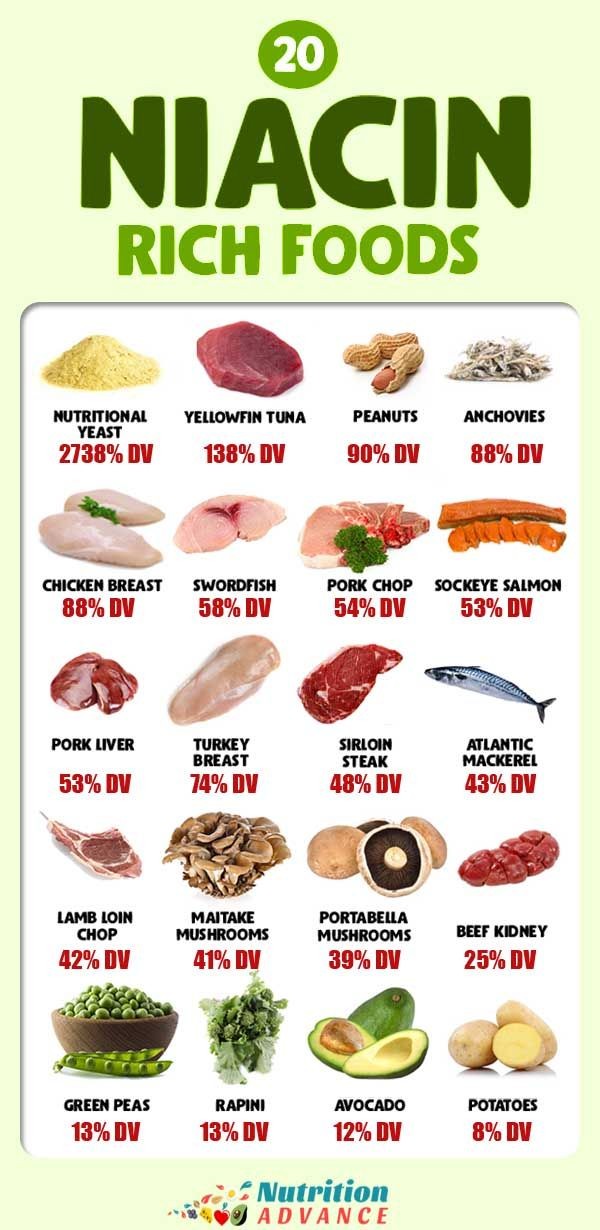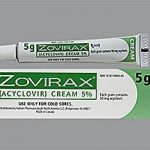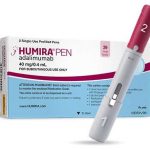
Contents
- 1 23 Foods High in Niacin (Vitamin B3)
23 Foods High in Niacin (Vitamin B3)
Niacin is found in various whole and processed foods, with higher concentrations in fortified packaged foods, certain vegetables, and animal sources like tuna, red meat, and eggs.
Most healthy people who follow a balanced diet get enough vitamin B3. However, studies show that 15 to 25 percent of older adults don’t meet the recommended daily allowance for niacin.
The body can convert the amino acid tryptophan into nicotinamide, a form of niacin. Good sources of tryptophan include meat, milk, and eggs. Consuming food derived from plants or animals is a natural and healthy way to meet your daily niacin needs.
23 Foods High in Niacin
| Sautéed or braised beef, lamb, or veal liver | 17 to 22 mg |
| Roasted chicken (white meat, with or without skin) | 15 to 20 mg |
| Dried and salted Atlantic cod | 19 mg |
| Sautéed milk-fed veal cutlet | 19 mg |
| Poached salmon | 18 mg |
| Canned tuna | 16 to 18 mg |
| Baked or grilled yellowfin tuna or swordfish | 17 to 18 mg |
| Sautéed or braised veal leg, loin, or shank | 16 to 17 mg |
| Smoked sturgeon | 17 mg |
| Grilled domestic duck (without skin) | 17 mg |
| Baked bluefin tuna, Spanish (striped) mackerel, king mackerel, salmon | 14 to 16 mg |
| Baked shad | 11 mg |
| Grilled Spanish mackerel | 11 mg |
| Roasted goose thigh, with skin | 10 mg |
| Grilled pork, assorted cuts | 5 mg |
| Grilled haddock | 4 mg |
| Raw or steamed Pacific oysters | 2 to 4 mg |
| Brown rice | 2.6 mg |
| Sweet potato | 1 mg |
| Per avocado | 3.5 mg |
| Anchovies | 16 mg |
| Peanuts (dry roasted) | 14.4 to 16.4 mg |
| Mushrooms | 6.3 mg |
QUESTION
43 Sources of Vitamin B3
Some items, like cereals and beverages, are fortified with vitamin B3. It is often added to energy drinks due to its ability to reduce exhaustion and fatigue.
Vitamin B3 is relatively stable and doesn’t degrade quickly, so you can cook and consume the food sources. A balanced diet is the best way to fulfill your niacin needs.
16 Vegetarian Sources of Vitamin B3
- Spinach
- Kale
- Broccoli
- Asparagus
- Celery
- Mushrooms
- Yeast
- Avocado
- Chickpeas, green peas, and black-eyed peas
- Beans
- Lentils
- Potatoes and sweet potatoes
- Carrots
- Beets
- Edamame
- Soybeans and soybean derivatives, such as soy milk and oil
7 Nuts and Seeds Sources of Vitamin B3
- Peanuts
- Walnuts
- Pumpkin seeds
- Sunflower seeds
- Squash seeds
- Flaxseeds
- Almonds
9 Dairy Sources of Vitamin B3
- Milk
- Cheddar cheese
- Cottage cheese
- Butter
- Whole milk
- Buttermilk
- Yogurt
- Curd
- Human milk
5 Grain Sources of Vitamin B3
- All fortified breakfast cereals
- Oatmeal
- Wholegrain pasta
- Wholegrain bread
- Wholegrain flours, such as rice, wheat, bran, barley, and corn
6 Animal Sources of Vitamin B3
- Sea fishes like tuna, salmon, mackerel, trout, and sardines
- Shellfish
- Eggs
- Chicken
- Organ meats like liver and kidney
- Lean cuts of beef
3 Forms of Niacin (Vitamin B3)
Vitamin B3 is crucial for energy production, digestion, brain health, heart health, the neurological system, skin health, hormone production, and overall cellular functioning as a precursor to the coenzyme NAD+.
All three forms of vitamin B3 are metabolized into NAD+, an essential coenzyme present in all living cells. NAD+ is vital for energy metabolism and optimal cell functioning, particularly in the mitochondria, the cell’s power factories that convert food and oxygen into energy.
Niacin protects cells throughout the body from age-related damage and functional decline. Although the three forms of vitamin B3 have similarities, each has unique effects on the body and serves different purposes when used as a supplement.
- Nicotinic acid: This form of vitamin B3 is easily obtained from food. It is commonly used as a supplement to treat excessive cholesterol and heart disease and improve circulation. However, high doses may cause niacin flush, a red, itchy rash on the skin. Nicotinic acid can be converted by the body into nicotinamide.
- Nicotinamide or niacinamide: This form of vitamin B3 is easily obtained from the diet. It doesn’t cause flushing, so it’s commonly found in multivitamins and fortified foods like cereal. It can treat skin disorders, arthritis, and early-onset type I diabetes. Due to its anti-inflammatory and photoprotective properties, it is used in skincare products.
- Nicotinamide riboside (NR): Mostly found in NR supplements and in trace amounts in milk. Although not widely utilized yet, it can significantly improve cognitive function and slow down the aging process. NR is most effective at promoting NAD+ production in the body and brain compared to the other forms of vitamin B3. Adequate NAD+ levels are essential for the body’s response to stress. Enzymes use NAD+ to regulate cellular activity in response to external and internal challenges, such as environmental pollutants, pro-inflammatory diets, trauma, and prolonged pharmaceutical use.
What is the Daily Requirement of Niacin (Vitamin B3)?
Vitamin B3 is water-soluble, which means you need to consume the required amount daily since it’s excreted through urine. It can’t be stored in the body like fat-soluble vitamins such as vitamin D.
| Infants 0 to 6 months | 2 | – |
| Infants 6 to 12 months | 4 | – |
| 1 to 3 years | 6 | 10 |
| 4 to 8 years | 8 | 15 |
| 9 to 13 years | 12 | 20 |
| Females 14 to 18 years | 14 | 30 |
| Males 14 to 18 years | 16 | 30 |
| Females 19+ years | 14 | 35 |
| Males 19+ years | 16 | 35 |
| Pregnant females 19 to 50 years | 18 | 35 |
| Lactating females 19 to 50 years | 17 | 35 |
Subscribe to MedicineNet’s Weight Loss/Healthy Living Newsletter
By clicking "Submit," I agree to the MedicineNet Terms and Conditions and Privacy Policy. I also agree to receive emails from MedicineNet, and I understand that I may opt out of MedicineNet subscriptions at any time.
What Are the Symptoms of Niacin Deficiency?
Most healthy people don’t need to take a vitamin B3 supplement since deficiency is rare and dietary sources are the best way to correct it. However, doctors may prescribe niacin at appropriate dosages to address specific health issues.
2 Forms of Niacin Deficiency
- Primary deficiency: Caused by inadequate dietary intake when someone doesn’t consume enough vitamin B3 or tryptophan.
- Secondary deficiency: Occurs alongside another health condition that interferes with vitamin absorption, such as alcoholism, severe diarrhea, or Crohn’s disease.
Common Symptoms of Mild Vitamin B3 Deficiency
Food adjustments or a multivitamin can usually resolve these symptoms.
- Indigestion
- Fatigue
- Canker sores and a bright red tongue
- Poor circulation
- Depression
Severe Vitamin B3 Deficiency or Pellagra
Prescription niacin supplements are used to treat this condition under a doctor’s care:
- Delusions or mental confusion
- Scaly and cracked skin
- A swollen mouth
- Diarrhea
- Vomiting
- Headaches
- Fatigue
- Depression
- Affects the skin, digestive system, and neurological system and can be fatal if left untreated


